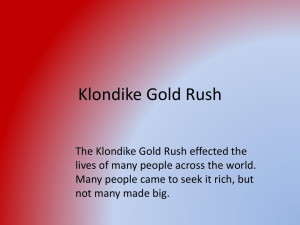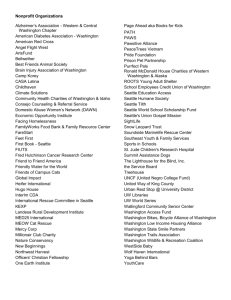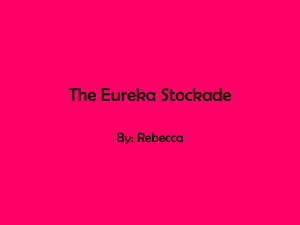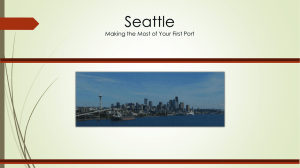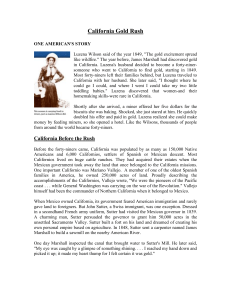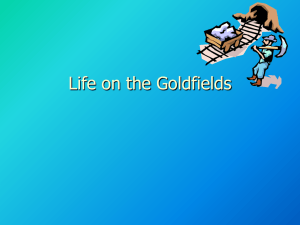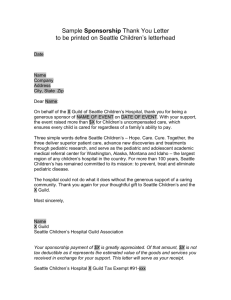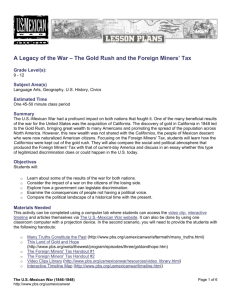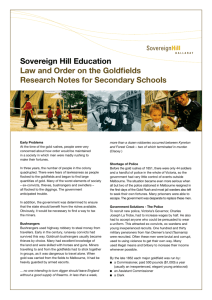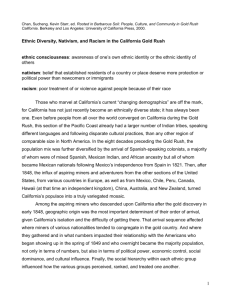Call of the Klondike - FSA Practice
advertisement
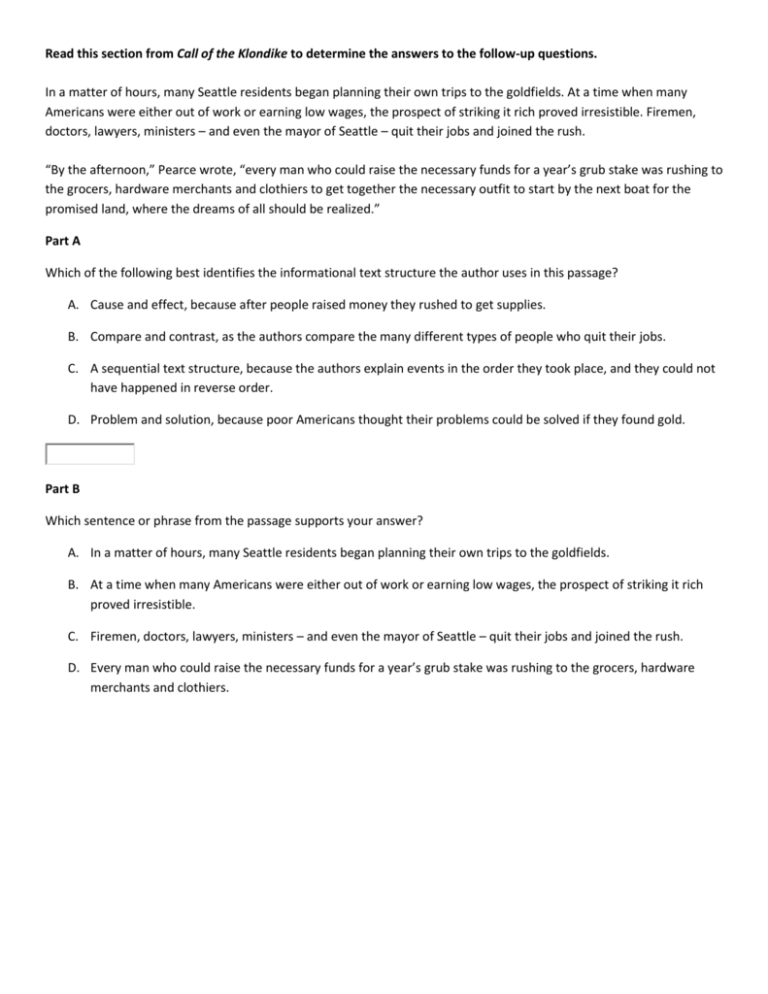
Read this section from Call of the Klondike to determine the answers to the follow-up questions. In a matter of hours, many Seattle residents began planning their own trips to the goldfields. At a time when many Americans were either out of work or earning low wages, the prospect of striking it rich proved irresistible. Firemen, doctors, lawyers, ministers – and even the mayor of Seattle – quit their jobs and joined the rush. “By the afternoon,” Pearce wrote, “every man who could raise the necessary funds for a year’s grub stake was rushing to the grocers, hardware merchants and clothiers to get together the necessary outfit to start by the next boat for the promised land, where the dreams of all should be realized.” Part A Which of the following best identifies the informational text structure the author uses in this passage? A. Cause and effect, because after people raised money they rushed to get supplies. B. Compare and contrast, as the authors compare the many different types of people who quit their jobs. C. A sequential text structure, because the authors explain events in the order they took place, and they could not have happened in reverse order. D. Problem and solution, because poor Americans thought their problems could be solved if they found gold. Part B Which sentence or phrase from the passage supports your answer? A. In a matter of hours, many Seattle residents began planning their own trips to the goldfields. B. At a time when many Americans were either out of work or earning low wages, the prospect of striking it rich proved irresistible. C. Firemen, doctors, lawyers, ministers – and even the mayor of Seattle – quit their jobs and joined the rush. D. Every man who could raise the necessary funds for a year’s grub stake was rushing to the grocers, hardware merchants and clothiers. Reread this section from Call of the Klondike to identify relevant information that the author provided, and answer the follow-up questions. Stanley Pearce and Marshall Bond were in Seattle, Washington, when it happened. On July 17, 1897, sixty-eight rugged miners stepped off the S.S. Portland steamship and made their way through the excited crowd. They were carrying large sacks filled with the most precious metal in the world—gold. Stanley Pearce described the scene this way: “Thousands of people in the public square watched the weather-beaten and hardy adventurers stagger into the express office with sacks of gold, gold in blankets, in oil cans, and even in moccasins.” Together, these miners brought back an astounding four thousand pounds of gold. It was worth nearly one million dollars, which, by today’s standards, would be many times that amount. Three days earlier, miners on another ship, the S.S. Excelsior, had arrived in San Francisco with large quantities of gold as well. Both groups of miners had found their gold in the same place: the Klondike region of northern Canada. Soon these discoveries would make headlines around the world. In a matter of hours, many Seattle residents began planning their own trips to the goldfields. At a time when many Americans were either out of work or earning low wages, the prospect of striking it rich proved irresistible. Firemen, doctors, lawyers, ministers—and even the mayor of Seattle—quit their jobs and joined the rush. “By the afternoon,” Pearce wrote, “every man who could raise the necessary funds for a year’s grub stake was rushing to the grocers, hardware merchants and clothiers to get together the necessary outfit to start by the next boat for the promised land, where the dreams of all should be realized.” Part A Which detail about the sixty-eight miners is the most relevant to the topic of the section? A. The detail about the 68 miners help readers vividly imagine the scene. B. The detail about the 68 miners describes an event that led to the Klondike Gold Rush. C. The detail about the miners conveys the authors’ sense of excitement about the topic. D. The detail about the miners explains how a claim was made and officially recorded. Part B Based on the topic of the section, which piece of information about the miners is the most relevant? A. “Stanley Pearce and Marshall Bond were in Seattle, Washington, when it happened.” B. “‘Thousands of people in the public square watched the weather-beaten and hardy adventurers stagger into the express office with sacks of gold, gold in blankets, in oil cans, and even in moccasins.’” C. “Firemen, doctors, lawyers, ministers—and even the mayor of Seattle—quit their jobs and joined the rush.” D. “Both groups of miners had found their gold in the same place: the Klondike region of northern Canada.”
